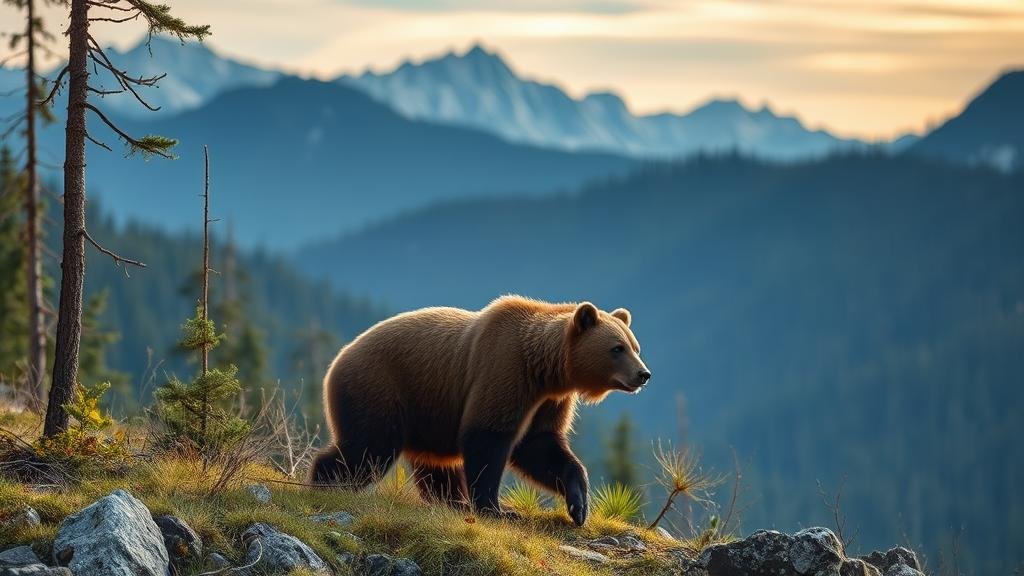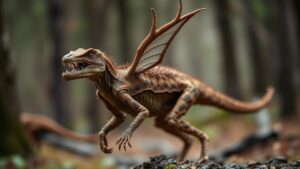Exploring the high-altitude forests of the Andes for sightings of a bear-like cryptid known in local folklore.
Exploring the High-Altitude Forests of the Andes: A Search for the Bear-Like Cryptid
The Andes Mountains, stretching over 7,000 kilometers along the western edge of South America, are not only known for their breathtaking landscapes and rich biodiversity but also for their deep cultural significance. Among the myriad of legends that inhabit this mountainous region is the tale of a bear-like cryptid, known in local folklore as the “Puma de las Niebla,†or Fog Puma. This article delves into the exploration of the high-altitude forests of the Andes in search of this elusive creature, examining local lore, ecological context, and the implications of such searches.
The Legend of the Puma de las Niebla
For centuries, indigenous communities have told stories of the Puma de las Niebla, often described as a large, elusive creature resembling a bear but with distinctive features that set it apart. Some interpretations suggest it possesses attributes of both a bear and a large feline, generating intrigue and speculation among cryptozoologists and adventurers alike.
Historical accounts indicate that sightings of the Puma de las Niebla were most prevalent during the 18th and 19th centuries, coinciding with the exploration of the Andes by European settlers. e stories reflect the rich tapestry of Andean culture, intertwining elements of nature with spiritual beliefs. Interestingly, a study published in the Journal of Ethnozoölogy in 2021 highlighted that the symbolism attached to the Puma de las Niebla relates closely to ecological concerns, representing a guardian of the forest.
The Ecological Importance of High-Altitude Forests
The high-altitude forests of the Andes, often referred to as “cloud forests,†are characterized by unique climatic conditions that allow for the proliferation of diverse flora and fauna. These forests lie at elevations ranging from 1,200 to 2,500 meters, shrouded in mist and hosting an array of vegetation, including ferns, bromeliads, and diverse types of orchids.
According to the World Wildlife Fund, these ecosystems are home to over 10,000 species of plants and animals, many of which are endemic. This biodiversity plays a vital role in the ecological balance, serving as a crucial habitat for various species including the Andean condor and the spectacled bear. But, these forests face threats from deforestation and climate change, making sustainable exploration and conservation efforts imperative.
Cryptozoology and the Search for the Puma de las Niebla
The field of cryptozoology, dedicated to the study of animals whose existence is not substantiated by mainstream science, draws enthusiasts keen to uncover hidden wonders of the natural world. Several expeditions have sought to find evidence of the Puma de las Niebla, employing techniques such as wildlife cameras, track analysis, and collaboration with local guides who possess invaluable cultural knowledge.
A notable expedition in 2018 led by Dr. Samuel Vargas, a biologist and cryptozoologist, ventured into the cloud forests of Ecuador. They set up remote camera traps in regions known for cryptid sightings. While the team did not capture direct evidence of the Puma de las Niebla, they documented various wildlife interactions and discovered new nests, underscoring the rich biodiversity of the region.
Challenges of High-Altitude Exploration
Exploring the Andean high-altitude forests presents unique challenges. Difficult terrain, fluctuating weather conditions, and altitude sickness can impede efforts. Plus, the cultural sensitivities regarding the local fauna and legends must be respected. Engaging with local communities and understanding their perspectives is essential for respectful exploration and can provide critical insights into sightings of the Puma de las Niebla.
- Altitude acclimatization is vital, as elevations above 2,500 meters can lead to serious health issues.
- Weather changes can occur rapidly, requiring preparation for rain, fog, and cooler temperatures.
- Local guides can enhance the experience by sharing folklore and knowledge about the natural environment.
Conclusion: A Call for Exploration and Conservation
Whether or not the Puma de las Niebla exists remains an open question that pulls together elements of folklore, ecology, and community. allure of this bear-like cryptid fuels exploration and curiosity while emphasizing the importance of conservation for the unique ecosystems of the Andes. By advocating for sustainable practices and engaging indigenous communities, explorers can contribute to a deeper understanding of this region’s biodiversity and cultural heritage.
As you consider your next adventure into the high-altitude forests of the Andes, remember that the search for the mythical Puma de las Niebla is not just about uncovering cryptids; its about connecting with nature and the rich cultural narratives that have evolved alongside it. Such pursuits encourage us to appreciate the magic of the natural world and the diverse stories it holds.


